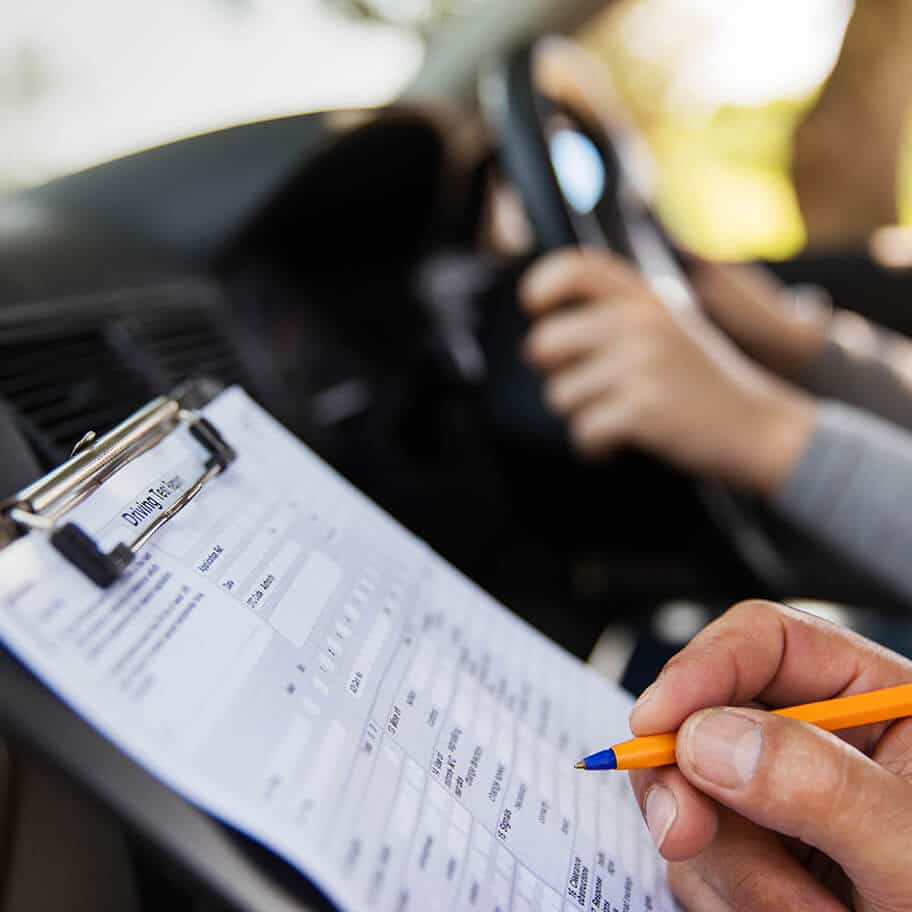Law Regarding Learner Drivers
Despite a professional driving instructor present in the vehicle, accidents can still occur. Although learner drivers have the same duty of care as other road users, drivers should cater extra care for learner drivers and extend their braking distance between cars.
The law clearly outlines the set of rules and responsibilities both a learner driver and an instructor must obey. It is crucial that when a learner driver is on the road that they are accompanied by a full licensed driver. Without the presence of a fully licensed driver, the person is not covered by insurance in the event of an accident.
The full list of the responsibilities learner drivers have include:
- Being aged 17 or over
- Hold a provisional licence (learners permit)
- Have a passenger present who has a clean full driving licence for at least 2 years
- Clearly display ‘L’ plates on the front and back of the vehicle
Common Injuries
Since the learner driver is new to the rules of the road it is unlikely that any collision that may occur will be at a high speed. The most common cause of driving lesson accident claims are due to rear-end collisions. Some of the injuries sustained from driving lesson accidents include:
Liability
It is important to note that a driving instructor has a duty of care to ensure the learner is driving safely, giving clear direction and observant for any potential signs of danger. If an instructor fails to comply with these duties they may be held liable for the collision. Reasons for their negligence may include being distracted, unqualified instructor or using their phone when they should be concentrated on the road. Driving schools can sometimes be held accountable for driving lesson accidents if they supplied a vehicle that was faulty or considered non-road worthy.
Third Party Involvement
Unfortunately, no matter what way it is looked at, all road users have a chance of being involved in a road traffic accident. The Road Safety Authority frequently issue information on guidelines about giving learner drivers the extra road space that they need to feel comfortable on the road. If a third party vehicle tailgates or attempts to overtake the car which does not leave enough room for the learner this could cause a crash. In these circumstances, it may be likely that the car who acted dangerously is held negligent for the collision.
What to do after a road traffic accident?
Following a road traffic accident, whether as a driver, passenger, pedestrian or cyclist, there are a number of steps you should follow:
-
Seek medical attention
Your health is your wealth and should be your first priority. Immediately after a road traffic accident, take a second to assess yourself to determine if you have any injuries. Then check if any passengers or anybody else involved in the accident need medical attention. If you or anyone else involved has sustained a serious injury ensure that you contact an ambulance to attend the scene.
For minor injuries, you must remember that minor injuries where you ‘feel fine’ could progress to a more serious injury in the future. In this case it is always better to be safe than sorry and advisable that you go to your nearest accident and emergency (A&E) or local GP to be checked out.
-
Gather all relevant information at the scene
It is important that you gather all the relevant information in connection with your accident:
- Details of another driver(s)/people involved: name, address, contact information, vehicle registration number and vehicle insurance information. You can also offer your own information to the others involved in the accident.
- Name and contact details of any emergency service workers at the scene – paramedic/Gardaí.
- Take a picture of the scene and damage to all vehicles involved from different angles; this will help your solicitor understand how the accident happened.
- If there are any CCTV recordings of the accident, such as CCTV cameras in a nearby shop, for example, you should try to obtain this footage.
- Dash Cam footage – if you have any.
- Record the time and date of the accident.
- Weather conditions at the time.
- Receipt for repairs of damage to your vehicle.
- If possible, try to collect the contact details of anybody that witnessed the accident. This may be of use if you do decide to pursue a road traffic accident claim.
-
Report the incident to the Gardaí
Regardless of how minor or serious the road traffic accident was, it is important that you call the Gardaí to report the accident immediately.
For minor accidents, the Gardaí may tell you that they will not be attending the scene. In this scenario, the appropriate information should be exchanged. In these cases, it is also important that you visit your nearest Garda station to request that they take details of the accident and to take your statement about the accident.
For more serious road traffic accidents, where an ambulance has been called, the Gardaí may arrive at the scene to assess, take statements from the people involved and any witnesses.
-
Contact your insurance company
If you are the driver of the vehicle involved in a road traffic accident it is important to inform your own insurance company so they have a record of the accident.
-
Speak to a road traffic accident solicitor
If you are considering moving forward with a road traffic accident claim for any personal injuries sustained it is advisable that you speak with a road traffic accident claims solicitor as soon as possible. If you are proceeding with a claim, the first step will be submitting your claim to the Injuries Board for assessment. A road traffic accident solicitor can help you in preparing your application to the Injuries Board and ensure that you follow the process in the correct format, meaning that you can move forward with your claim quickly without unnecessary delays.
It is important to remember to keep copies of any expenses that you have incurred as a result of the accident. It is also imperative to retain copies of medical reports or Garda reports, where possible as you will need them when making a claim.

